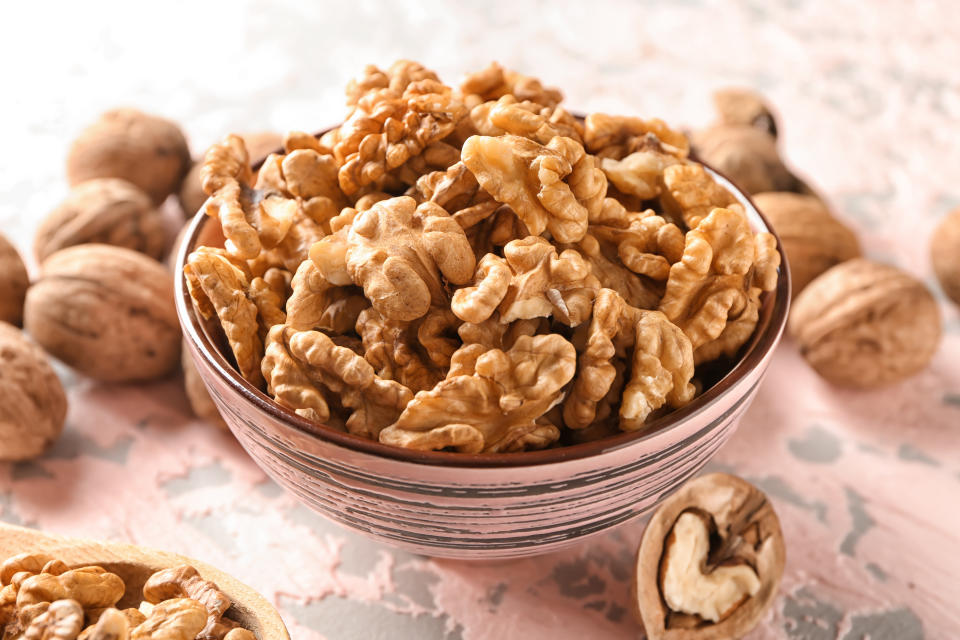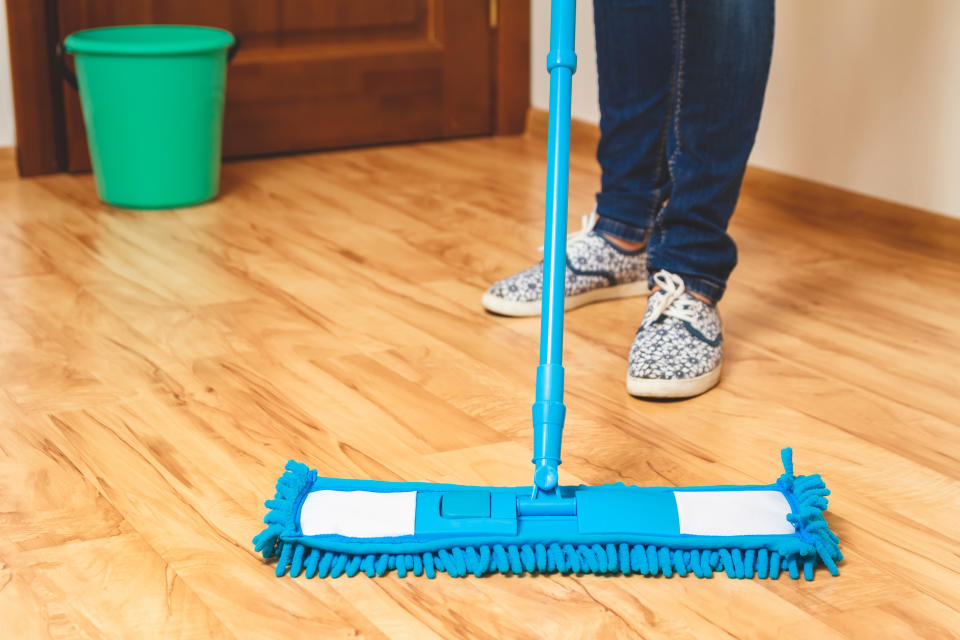Floor Pro Reveals the Walnut Trick That Erases Scratches on Wood Floors and Could Save You $1000s on Refinishing
Whether they're a light ash color, a gray blend, a warm red or a super dark hue, hardwood floors look stunning in a home. Unfortunately, over time, everything from furniture legs to pets and general wear and tear can lead to noticeable nicks and scratches in the surface of the wood. Talk about frustrating! Thankfully, you don’t have to shell out (pun intended) for pricey solutions — the average cost of refinishing floors is $1817 — to restore the look of your wood floor. Home-care experts reveal their secrets to fix scratches on wood floors in no time at all.
How can you fix minor scratches on wood floors?
Hiding those pesky marks on your floor doesn’t require special skill or a hard-to-find, store-bought product. You've likely heard about a few home hacks (from walnuts to cinnamon) that can conceal a smaller scratch. Do they really work?
Go nuts to fix scratches on most wood floors

The high oil content found in walnuts helps seep into the scratch to mask and heal it, says Nathaly Vierra, owner of InspireClean in Canada. For lighter wood floors, you may find that hickory or pecan nuts do the trick a bit better. You just need to apply a bit of pressure, and wait a few minutes to allow the nut's oils to seep into the wood. Then, take a soft cloth and gently buff over the scratch. “Nuts work well to save wood furniture too; the oils within the nut will seep in and disguise any scratch.”
This YouTube video shows just how easy it is!
Choose baking soda to fix scratches on light wood floors
“Mix 3 parts baking soda with 1 part olive oil and apply the paste to the scratched area,” suggests Vierra. “Rub it in with a soft cloth and buff until the scratch is no longer visible.” The gentle abrasive texture of baking soda helps buff out the scratch, while the olive oil polishes and adds a protective seal to prevent grease and water damage.
Opt for cinnamon to fix scratches on dark wood floors
For small blemishes on dark wood only, sprinkle a generous amount of cinnamon on the scratch. Let it sit for a bit, then brush away the excess. The spice will leave behind a dark stain on the wood, making the scratch undetectable.
How can you fix larger scratches on wood floors?
While your kitchen pantry remedies can certainly get the job done, some blemishes need a bit more elbow grease. For particularly tough-to-remove scratches, sandpaper and some wood filler can help make your floor look good as new.
The how-to from Charlotte Granville, a home remodeling specialist at Fixr.com (a home improvement information website):
First, fill in the scratch with a bit of wood filler (available at hardware stores for as little as $4), then grab a sheet of fine-grit sandpaper to buff out the edges. “Make sure to go for a 150-grit sandpaper to help minimize the risk of creating any more scratches as you sand the damaged area,” Granville says. “And always sand in the direction of the grain so it blends in with the rest of the floor!”
When you’re finished, Granville recommends using a varnish or other protective coating after sanding to help blend it in with the rest of the floor and protect the area.
How do you prevent scratches on your wood floor?

Mop, don't vacuum. “Keeping the floors clean will stop dirt from collecting in any scratches and making them more noticeable,” says Granville. The best way to do that? Use a microfiber mop (if all you have is a vacuum, use it with the soft brush attachment). This will prevent blemishes on the wood’s surface.
Clean with this. Using strong cleaning products on your wood floors can cause discoloration and make marks appear even more noticeable. Opt for a mild detergent with warm water to clean your floors instead, says Vierra. “For tough stains, use a cloth dampened with rubbing alcohol — this should help remove the marks without damaging the surface.”
Save your wine corks. Sure, you can buy felt pads to attach to chair legs to scuff-proof your floor, but it's easy to make your own with used wine corks! The simple trick: Using a sharp knife, carefully cut 1⁄4"-thick rounds from a wine cork. Apply a dab of wood glue to each disc, then attach to the bottoms of your chair legs. The cushiony material will work just as well as the felt pads—but won’t cost you a cent.

